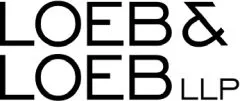- within Intellectual Property topic(s)
- within Intellectual Property, Employment and HR and Real Estate and Construction topic(s)
- in United Kingdom
In copyright infringement case involving Christian musical works, Ninth Circuit affirms district court's decision to exclude certain evidence pertaining to access as sanction for untimely disclosure, but nonetheless reverses district court's grant of summary judgment, finding triable issues as to plaintiff's access theories and substantial and/or striking similarity.
Plaintiff Vincent Ambrosetti sued defendants Bernadette Farrell
and Oregon Catholic Press, alleging that Farrell copied his
liturgical work "Emmanuel" in her own Christian music
composition "Christ Be Our Light." Plaintiff's work
was first published in 1980 in an anthology including other works.
Plaintiff subsequently performed "Emmanuel" at hundreds
of events in the United States, including at conventions of the
National Association of Pastoral Music (NPM), and did a commercial
recording of the work. At a 1985 NPM convention, plaintiff alleged
he met the then publisher and chief executive of defendant Oregon
Catholic Press (OCP), Owen Alstott. Plaintiff provided Alstott a
copy of "Emmanuel" at the convention and provided a
second copy a year later. In 1986 and 1987, plaintiff received
letters acknowledging Alstott's receipt of music from
plaintiff. In 1986, Alstott traveled to London and met defendant
Farrell, a British musician; by 1992, the two were married. In
1993, Farrell composed the song "Christ Be Our Light,"
which was published by OCP.
Plaintiff filed suit for copyright infringement against Farrell and
OCP on May 8, 2020. After the close of discovery, and five days
prior to the deadline for filing dispositive motions, plaintiff
disclosed to defendants for the first time the existence of the
letters from Alstott acknowledging receipt of music from plaintiff.
Plaintiff had not previously disclosed that he had submitted music
to OCP, and instead had alleged that defendants accessed
plaintiff's work either by attending conventions where the work
was performed or via widespread dissemination of the work.
Defendants moved for summary judgment, and plaintiff opposed,
stating in his declaration that he had submitted copies of his work
to OCP and had received the acknowledgment letters. Defendants
requested on reply that the district court exclude the letters and
preclude plaintiff from asserting a theory of access based on the
letters. The district court held that Alstott's letters, as
well as plaintiff's theory of access based on the letters,
should be excluded as a sanction for untimely disclosure. The
district court further granted defendants' motion for summary
judgment; despite finding the works substantially similar, the
district court held that plaintiff had not raised a genuine issue
of material fact as to other theories of access or demonstrated
striking similarity. Plaintiff appealed the decision.
First, plaintiff argued that the district court abused its
discretion by failing to apply the proper legal standard when
imposing its "claim dispositive" discovery sanctions. But
the court of appeals held that the sanctions were not, in fact,
claim dispositive, as the exclusion of Alstott's letters was
not "fatal" to plaintiff's claim for copyright
infringement. For example, plaintiff could still establish access
to his work by proving Farrell's attendance at NPM conferences
or via a theory of widespread dissemination; and even if plaintiff
could not establish any theory of access, he could still argue that
the works at issue were strikingly similar. Further, the court
held, the district court had not abused its discretion by excluding
the letters, as the failure to produce the letters earlier in the
litigation was neither substantially justified nor harmless.
However, the court also held that the district court erred by
granting defendants' motion for summary judgment. Even
excluding Alstott's letters, plaintiff had raised genuine
issues of material fact as to Farrell's access to
"Emmanuel" and, moreover, as to whether the works were
strikingly similar.
For example, there was no dispute that Alstott and Farrell attended
NPM conventions at which plaintiff performed "Emmanuel,"
and these conventions would not have had more than 5,000 attendees.
The court therefore determined that there was a reasonable
possibility that Farrell could have accessed "Emmanuel"
before composing "Christ." Though Farrell and Alstott
denied attending these events, defendants could not obtain summary
judgment through their own unilateral denial of access.
The court also found a genuine dispute of material fact as to
plaintiff's theory that "Emmanuel" was widely
disseminated. The district court had rejected this theory because
plaintiff failed to establish the amount of sales—and thus
sufficient commercial success—of his work. However, the court
noted that "saturation of the relevant market can create a
reasonable possibility of access," and here, plaintiff had
demonstrated that the parties all were members of a small
liturgical music community during the relevant period. Plaintiff
further showed that "Emmanuel" was heavily publicized in
that small musical community. Thus, plaintiff had created a triable
issue regarding the work's widespread dissemination.
Lastly, the court found that the district court properly held that
there was a genuine issue of material fact as to whether
"Christ" and "Emmanuel" were substantially
similar. Plaintiff had provided expert analysis showing 23
aggregate similarities between the works, and the court held this
analysis adequately explained how unprotectable elements were
combined in a unique selection and arrangement shared by both
works. Moreover, defendants failed to identify any prior works
sharing this same selection and arrangement of pitches, rhythm,
meter and other elements. Based on the same reasoning, the court
also held that there was a genuine issue of material fact as to
whether the two works were strikingly similar.
The content of this article is intended to provide a general guide to the subject matter. Specialist advice should be sought about your specific circumstances.



